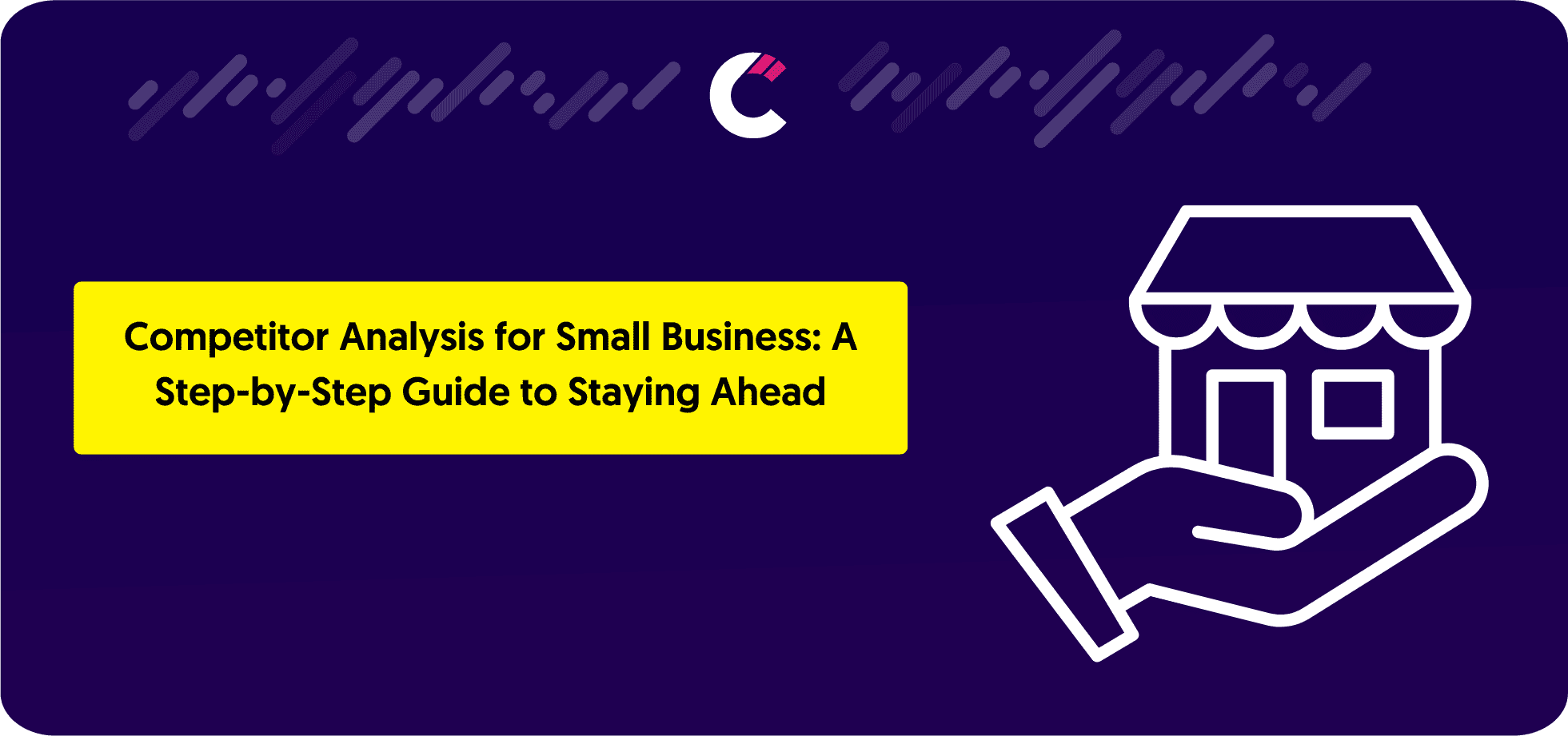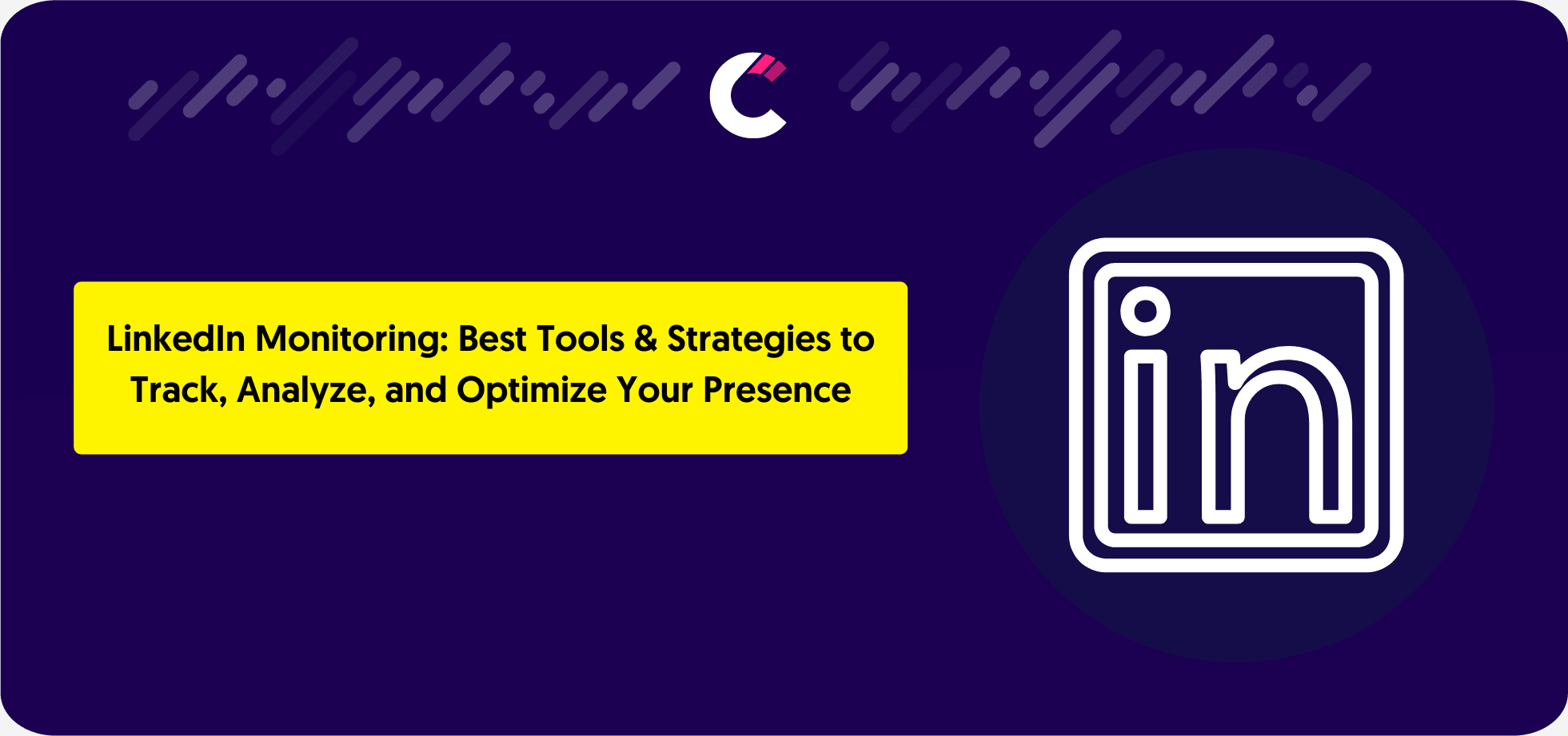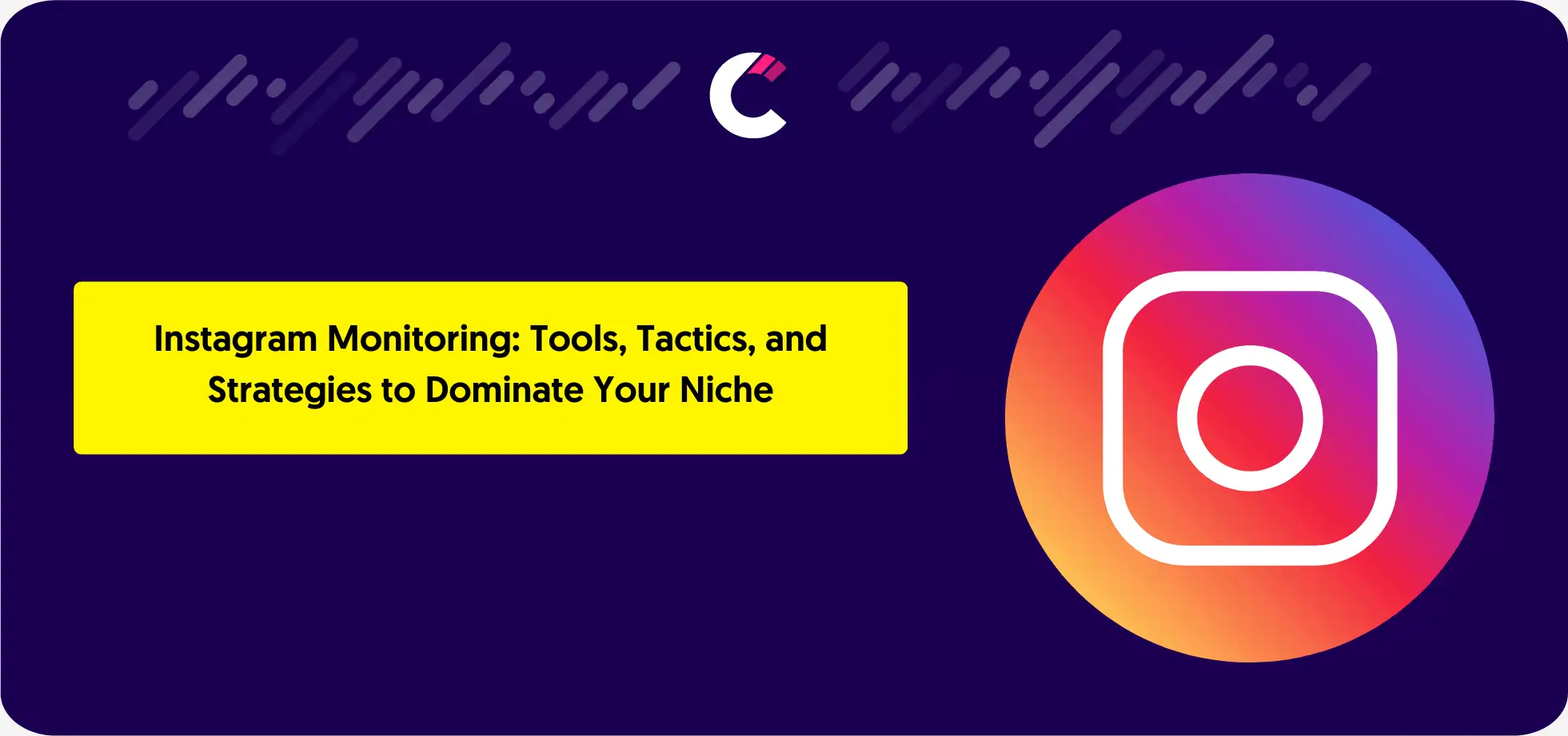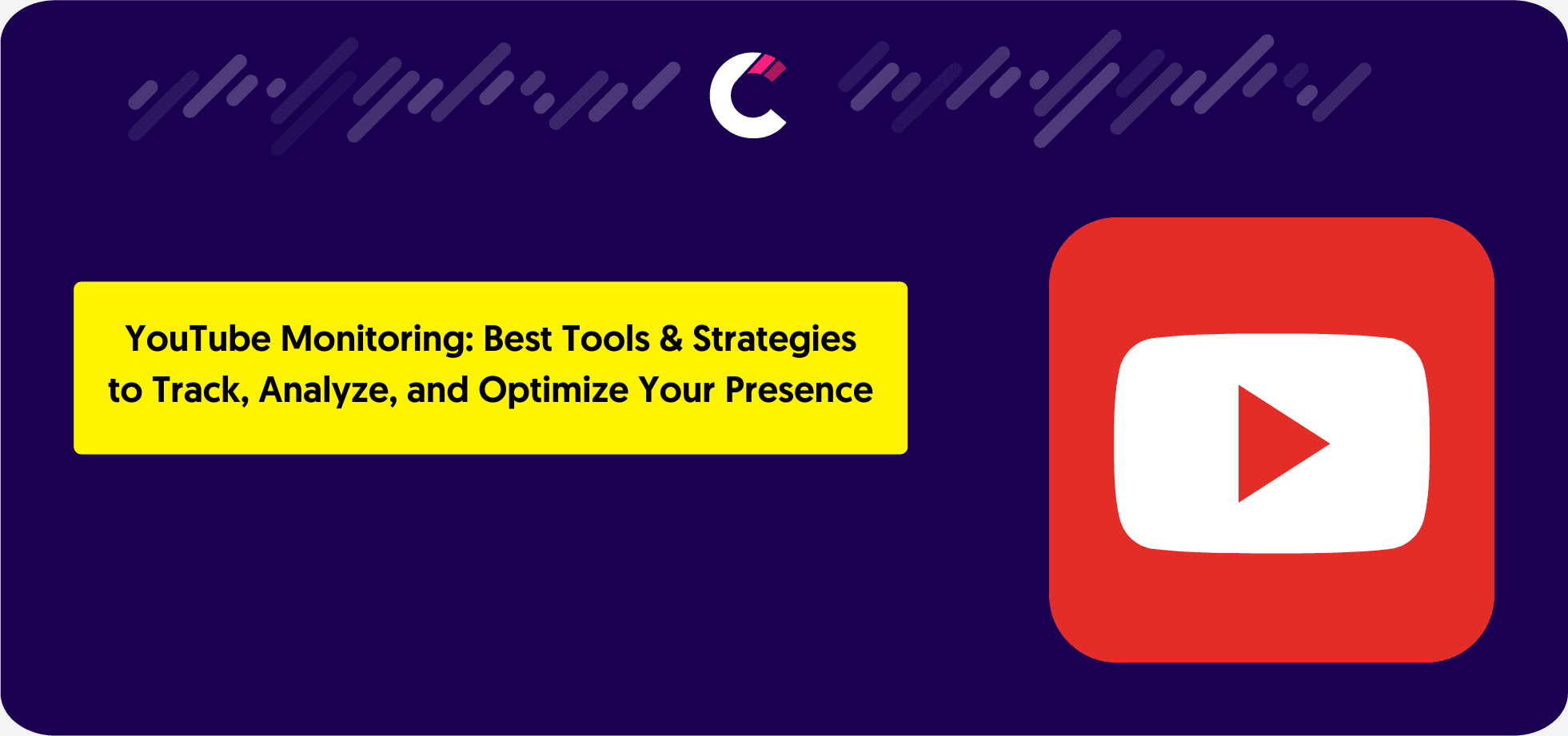What Is Competitor Analysis for Small Business?
Competitor analysis for small business is all about understanding your rivals—what they offer, how they market, and where they excel or fall short. Unlike general market research, which looks at industry-wide trends, this focuses on direct and indirect competitors.
The goal? To spot opportunities, refine your strategy, and stay ahead. It’s a must for small businesses looking to grow, improve their offerings, and make smarter decisions.
Why Competitive Analysis Is Essential for Small Businesses
Running a small business without tracking competitors is like navigating without a map. Competitive analysis helps you:
- Identify strengths and weaknesses – Understand where your business excels and where you need to improve.
- Find market gaps – Spot unmet customer needs or underserved areas.
- Understand customer expectations – Learn what attracts customers to competitors and how you can do better.
- Avoid blind spots – Prevent costly mistakes by staying aware of industry shifts and emerging players.
By keeping an eye on competitors, you’re not just reacting—you’re making proactive, data-driven moves to grow your business.
How to Conduct a Competitive Analysis for Small Business Using Competitors App
Manually tracking competitors is time-consuming. Competitors App simplifies the process by automating data collection, giving you real-time insights into your competition’s digital strategy.
Follow these steps to get started:
Step 1: Set Up Your Competitors App Account
Begin your journey by setting up an account with Competitors App. Take advantage of the 15-day free trial to explore the full range of features. This trial period allows you to monitor up to 10 competitors, giving you a comprehensive view of their online marketing strategies. You’ll gain insights into their main keywords, the ads and creatives they’re using, and much more. This initial step is crucial for establishing a baseline understanding of your competitive landscape.

Step 2: Identify Your Competitors
Use the Free Competitor Finder Tool to discover businesses directly competing with you, as well as indirect and replacement competitors. You’ll also receive instant alerts when new players enter your market, keeping you ahead of industry shifts.

Step 3: Add Competitors for Automated Tracking
Once you’ve identified key competitors, add them to your dashboard for continuous tracking. This allows you to monitor their marketing strategies, ad placements, SEO updates, and website changes—all from one place.
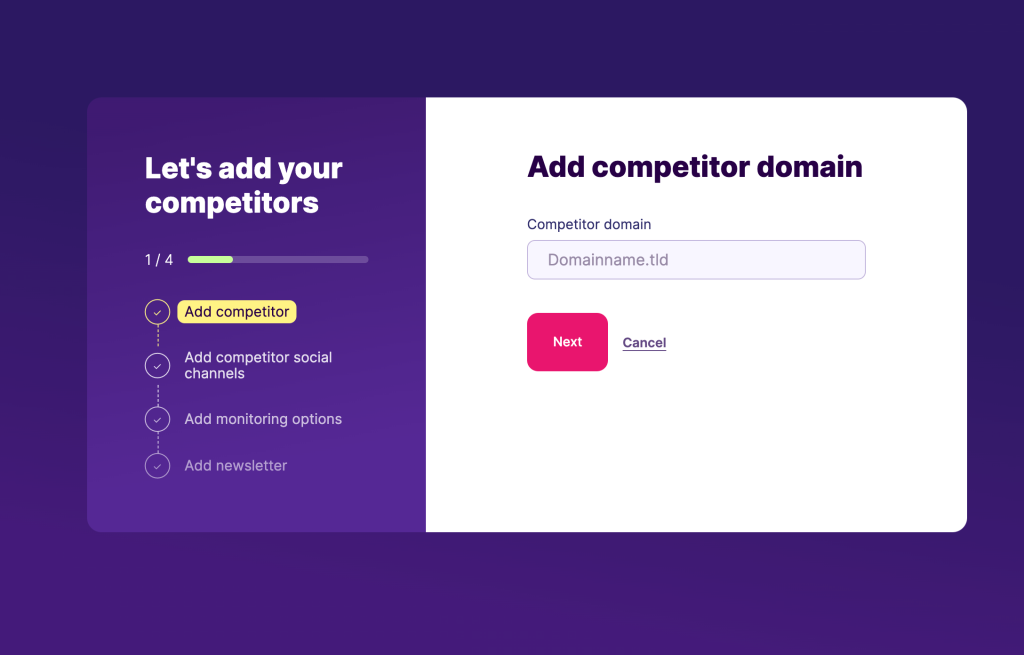
Step 4: Gather Key Insights
Your Competitors App dashboard provides valuable insights, including:
- Social media activity
- Paid advertising campaigns
- SEO rankings and backlink profiles
- Website content updates
- Email marketing strategies
These insights help you spot trends, gaps, and new opportunities in your industry.
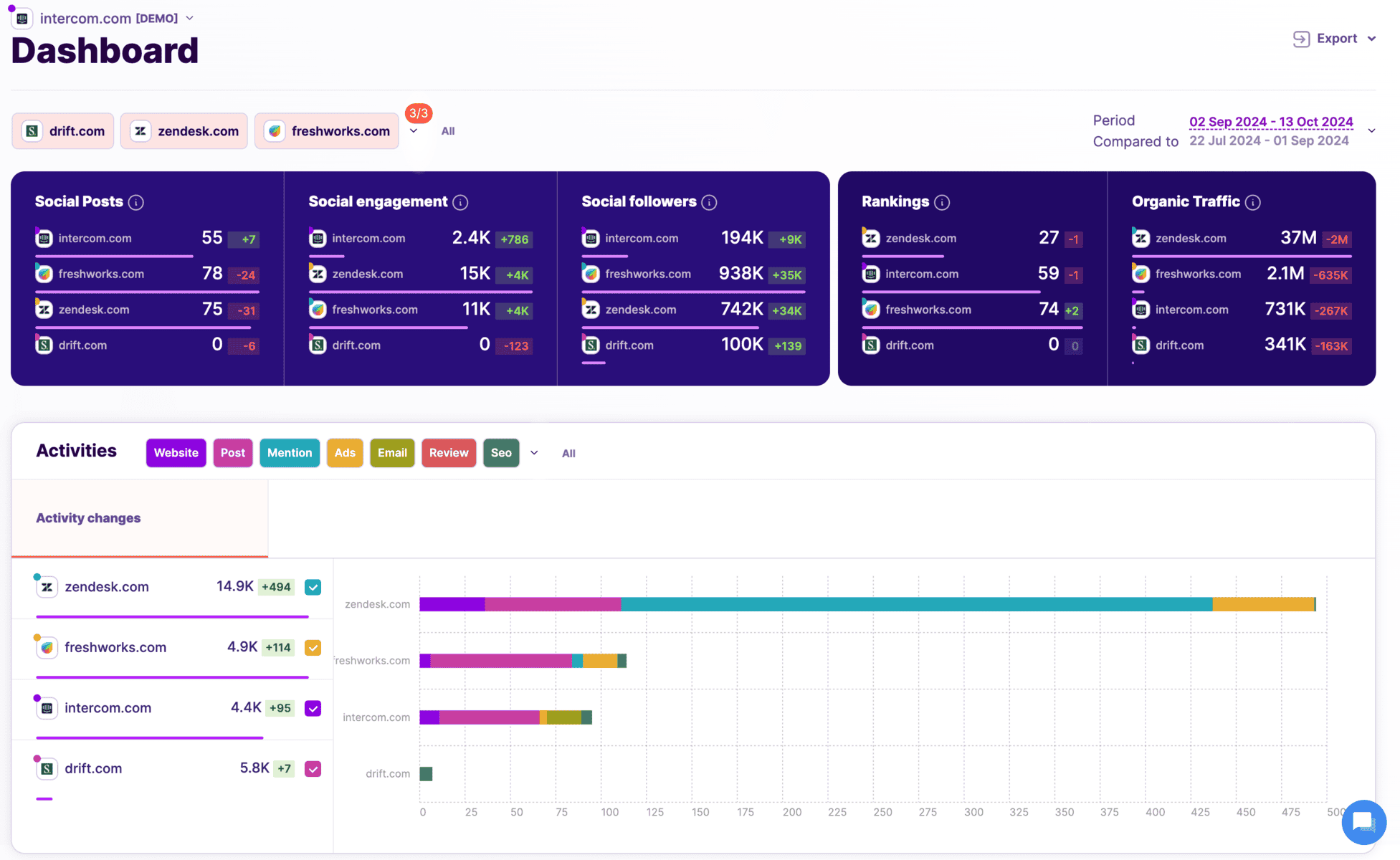
Step 5: Analyze Their Social Media Presence
See what platforms your competitors focus on, what type of content gets the most engagement, and where you can differentiate. Understanding their approach helps you refine your own content strategy.
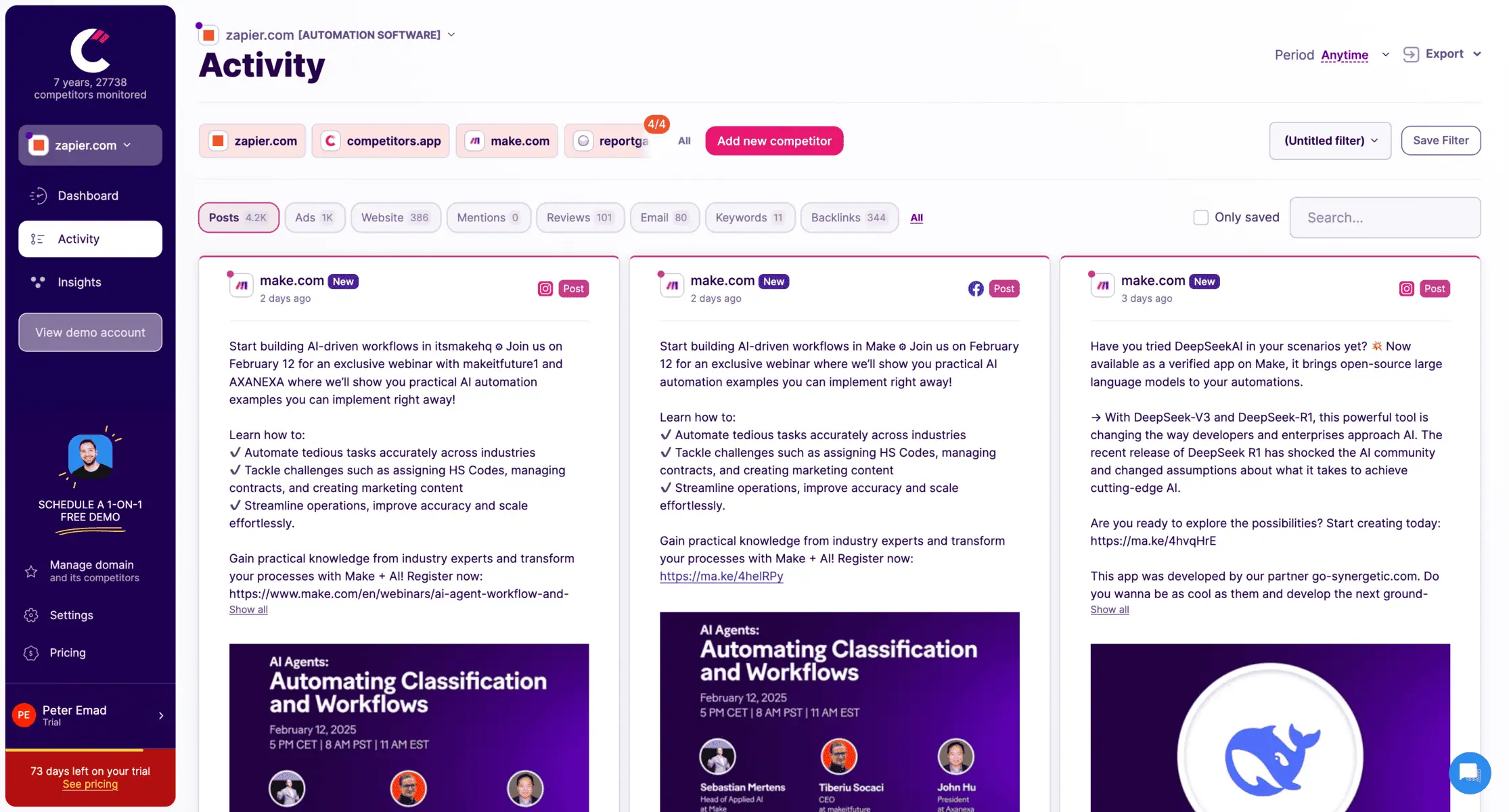
Step 6: Analyze Their Ads
Track where they’re spending their ad budget—Google Ads, Facebook Ads, or other platforms. Study their creatives, messaging, and offers to improve your own advertising strategy.
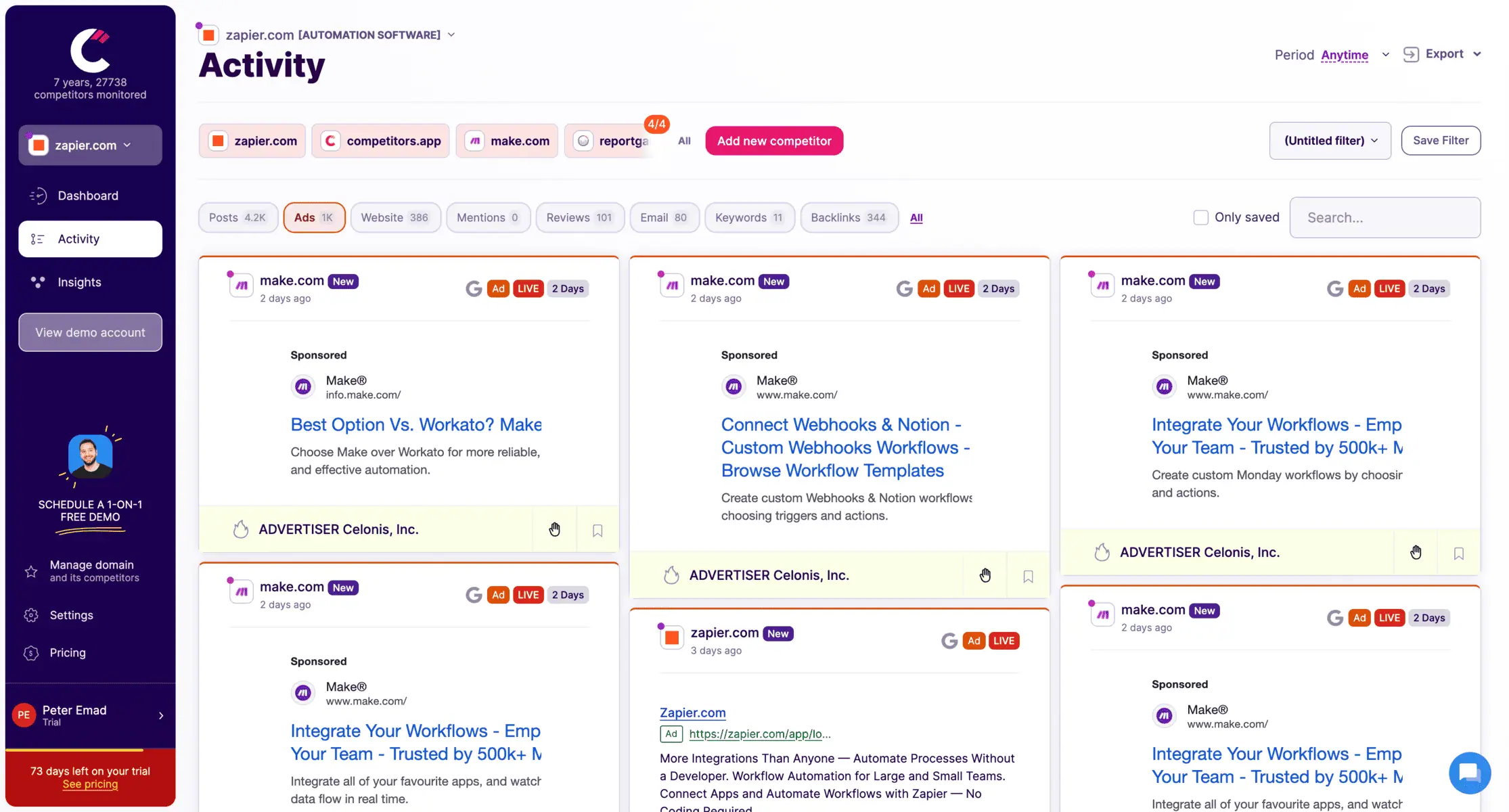
Step 7: Analyze Their SEO and Backlinks
Track where they’re spending their ad budget—Google Ads, Facebook Ads, or other platforms. Study their creatives, messaging, and offers to improve your own advertising strategy.
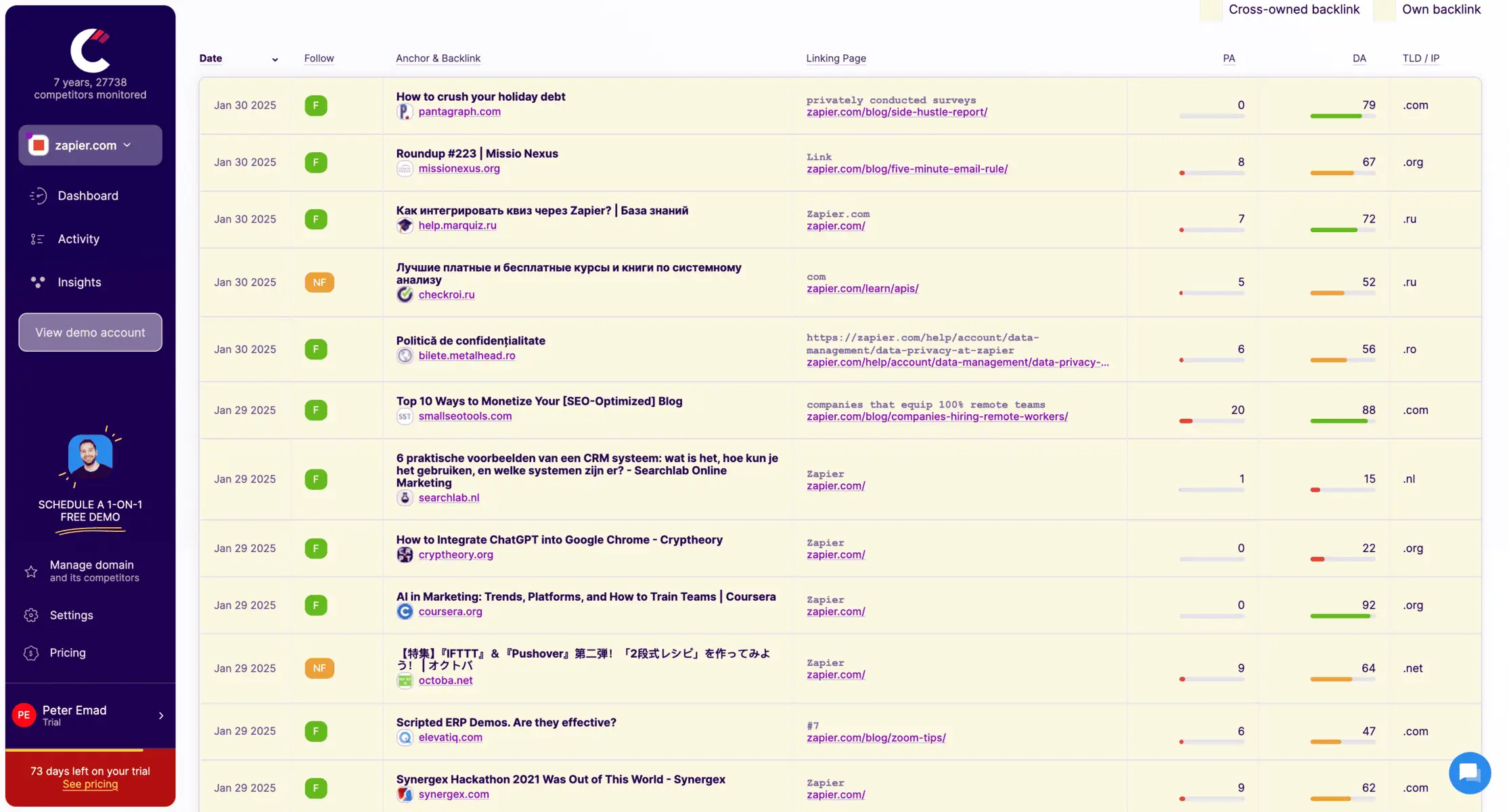

Step 8: Track Their Email Marketing Strategy
Monitor the frequency, tone, and promotional strategies of your competitors’ email campaigns. This allows you to adjust your email marketing for better engagement and conversions.
Step 9: Monitor Reviews and Customer Feedback
Keep an eye on competitor reviews from platforms like Google, Trustpilot, and G2. Understanding what customers love—or complain about—helps you position your business more effectively.
Step 10: Track Website Changes
Receive instant alerts whenever a competitor updates their website, including:
- New product or service launches
- Pricing changes
- Landing page updates
- New pages
- SEO changes
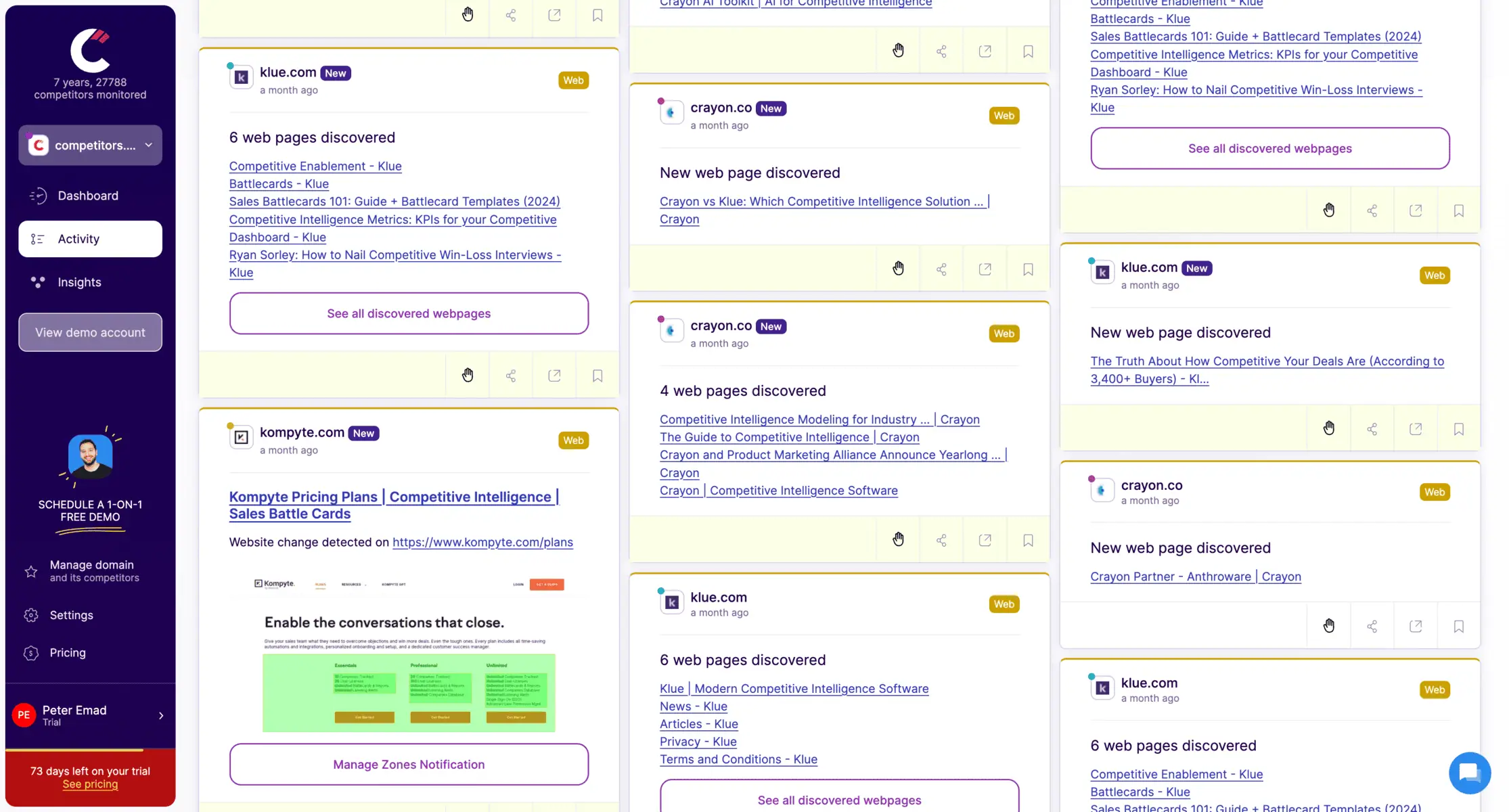
Staying informed about these changes allows you to react quickly and refine your own offerings.
By using Competitors App, you gain an automated, data-driven approach to competitor analysis, saving time while staying ahead of the competition.
Competitor Analysis Table: Structuring Your Findings
Collecting competitor data is one thing—organizing it effectively is another. A well-structured competitor analysis table helps you compare insights side by side, making it easier to spot opportunities and weaknesses.
Example of a Competitive Analysis Table
| Competitor Name | Key Products/Services | Pricing Strategy | Marketing Channels | Strengths | Weaknesses |
|---|---|---|---|---|---|
| Competitor A | Product X, Service Y | Premium pricing | Google Ads, SEO, Instagram | Strong brand presence | High prices limit customer reach |
| Competitor B | Product Z | Budget-friendly | Facebook Ads, Email Marketing | Affordable pricing | Weak customer support |
| Competitor C | Product X, Service Y | Mid-range pricing | SEO, Influencer Marketing | Strong online reviews | Limited advertising |
This table helps you quickly analyze where competitors focus their efforts and how your business can differentiate.
Using Spreadsheets to Organize Data
For a more detailed analysis, spreadsheets allow you to track competitor movements over time. You can create separate tabs for different categories such as:
- Pricing trends – Track price changes and promotional offers.
- Marketing performance – Log competitor ad campaigns, social media engagement, and email frequency.
- Product updates – Note new product launches and feature improvements.
By structuring competitor insights in a table or spreadsheet, you make the data actionable—helping you refine your strategy with clarity.
Leveraging Competitor Analysis for Business Growth
Competitor analysis isn’t just about gathering data—it’s about using it to make smarter business decisions.
Here’s how you can turn insights into action:
Refine Your Marketing Tactics
Studying competitors’ ad strategies, content performance, and social media engagement helps you adjust your approach. If a competitor sees high engagement on TikTok but ignores LinkedIn, you might find an untapped audience there.
Improve Your Product Offerings
Identify gaps in competitor products or services and use them to your advantage. If reviews show customers complaining about slow delivery or limited customization, you can position your business as the better alternative.
Adjust Your Pricing Strategy
Understanding competitors’ pricing helps you decide whether to compete on value, affordability, or exclusivity. If a major competitor raises prices, there may be an opportunity to attract price-sensitive customers.
Strengthen Customer Relationships
Competitor reviews often reveal what customers love and what frustrates them. Use this feedback to refine your customer experience, improve support, and create stronger loyalty.
By applying these insights, competitor analysis moves beyond research—it becomes a tool for real business growth.
Common Pitfalls to Avoid in Competitive Analysis for Small Businesses
Even with the right tools, competitor analysis can go wrong if common mistakes aren’t avoided.
Here’s what to watch out for:
Not Updating Competitor Research Regularly
The market shifts constantly—new competitors emerge, strategies change, and customer preferences evolve. Reviewing your analysis once a year isn’t enough. Set a schedule to update your research at least quarterly.
Falling Into Confirmation Bias
If you only look for data that supports what you already believe, you’ll miss key insights. Stay objective—analyze both competitor strengths and weaknesses to get a complete picture.
Collecting Data Without Taking Action
Gathering competitor insights is useless if you don’t apply them. Every data point should lead to a strategic adjustment, whether it’s refining your ads, adjusting pricing, or improving customer service.
Ignoring Indirect Competitors
Many businesses focus only on direct competitors, overlooking alternatives that serve the same customer needs. For example, a local café may see other cafés as competitors but ignore meal delivery services that pull customers away.
Focusing Only on Short-Term Strategies
Reacting to every competitor move can make your strategy feel scattered. Instead of copying short-term tactics, look for long-term trends—sustainable advantages come from deep insights, not quick reactions.
Avoiding these mistakes ensures your competitor analysis remains a valuable tool for long-term growth.
FAQs About Competitor Analysis for Small Businesses
How often should I conduct competitor analysis?
Competitor analysis isn’t a one-time process—it should be ongoing. Markets change, new competitors emerge, and strategies evolve. Ideally, review your competitive landscape quarterly and make adjustments as needed.
What data should I focus on when analyzing competitors?
Key areas to monitor include:
- Marketing strategies (ads, SEO, content, social media)
- Product offerings and pricing
- Customer reviews and feedback
- Website changes and branding updates
How can competitor analysis help my small business grow?
By tracking competitors, you can:
✅ Spot gaps in the market and position your business strategically
✅ Refine your Unique Selling Proposition (USP) based on industry trends
✅ Make data-driven decisions on pricing, marketing, and customer engagement
What are common mistakes to avoid in competitor analysis?
- Not updating your research regularly
- Relying on assumptions rather than data
- Ignoring indirect competitors who may impact your industry
- Failing to act on insights after gathering data
How can Competitors App help with competitor analysis?
Competitors App automates the process by tracking your competitors’ digital activity in real-time. It provides:
- Instant alerts on website changes, new ads, and SEO updates
- Competitor insights for social media, email marketing, and customer reviews
- A centralized dashboard to streamline your competitive research
What’s the next step after conducting competitor analysis?
Use your findings to:
🔹 Refine your marketing strategy based on what works for competitors
🔹 Adjust pricing or product offerings to stay competitive
🔹 Strengthen customer engagement by addressing industry trends
